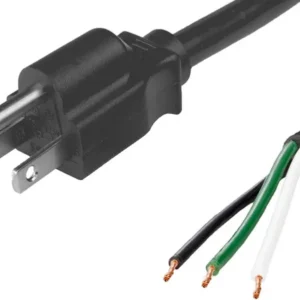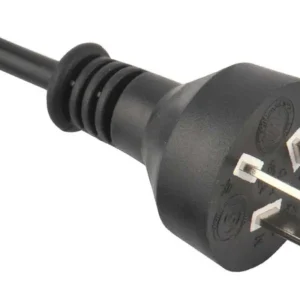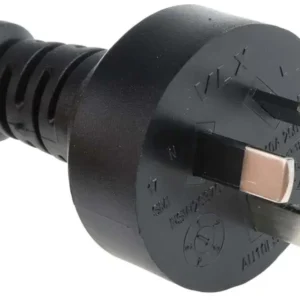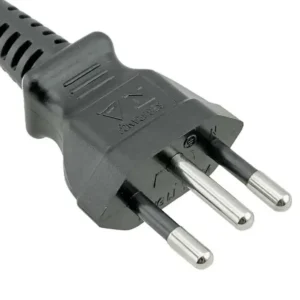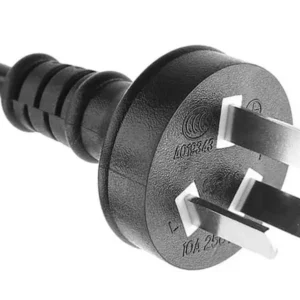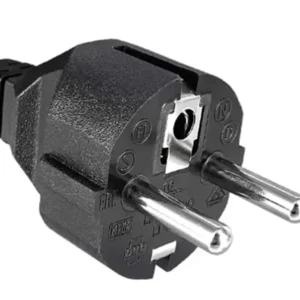Guide to Specifying Power Cords
Power cords – those seemingly simple cables connecting devices to electricity – are often overlooked. But choosing the right cord can be crucial for safety, performance, and compliance. This guide, your one-stop shop for power cord knowledge, will help you navigate the world of plugs, pins, and amperes with confidence.
Step 1: What plug is required?
Different countries and regions have different plug standards. For example, North America uses NEMA plugs, while Europe uses CEE plugs. and Devices often have specific plug requirements for the voltabe and amperge, so the first key step to specifying a power cord tips.
- Voltage and amperage (A) requirements: Mismatched voltage can damage your device, while insufficient amperage might limit its functionality. (i.e. 10A/125V, 10A/250V, etc.)
- Plug type: Different regions have different standards. Common types include:
North America: NEMA Standards
Europe: CEE 7/7 (Schuko) and CEE 7/5 (grounded Schuko)
Asia: BS 1363 (UK), JIS C 8303 (Japan), GB 1456 (China) (see details) - How many conductors? (Most common 2 or 3)
Step 2: What cordage is required?
What size, temperature rating, color, conductor colors? The specific cordage (type of cable) required for a power cord depends on several factors:
Location and Application:
- Region: Different regions have regulations and standards for power cords. Knowing your location (e.g., North America, Europe, Asia) is crucial.
- Indoor/Outdoor use: For outdoor use, weatherproof and UV-resistant cable jackets are essential. Consider environments like construction sites or patios.
Device Requirements:
- Voltage and amperage (A): Match the cable rating to your device’s needs. Insufficient rating can lead to overheating or damage.
- Power usage: High-power appliances like ovens or air conditioners demand heavier gauge cables (lower number) to handle higher currents safely.
Safety and Certifications:
- Safety certifications: Look for cords certified by international organizations like UL (US), CSA (Canada), or IEC (international) for safety compliance.
- Grounding: Most devices require grounded cords for safety. Ensure the cable has the necessary conductors for grounding.
Common Cordage Types:
- SJT: General-purpose indoor cords (e.g., extension cords, appliance cords).
- SJTO: Oil-resistant variant of SJT, suitable for damp or oily environments.
- SJTOW: Weatherproof version of SJT, ideal for outdoor use.
- SEJ: Heavy-duty indoor/outdoor cords for high-powered equipment.
- SOOW: Extra-flexible cords for demanding applications like construction sites.
Step 3: Is a connector required?
The connector in a power cord is another end that attach to the device itself. They come in various shapes and sizes depending on the application, and device requirements.
If yes, which type? (i.e. C7, C13, C19)
If no, what end preparations are required: ROJ (Remove outer jacket) + Strip (conductors), tinning, terminals?
Step 4: What length is required?
Choose a cord that reaches comfortably without excessive slack, preventing tripping hazards. Electrical equipment manufacturers will also consider cost, and users will consider storage. If it is too long or too short, there will be some problems.
Step 5: Certification
Look for cords certified by international safety organizations like UL (US), CSA (Canada), or IEC (international). It’s crucial to prioritize safety when selecting power cords, and looking for certifications from international safety organizations is an essential step.
Underwriters Laboratories (UL)
A prominent safety certification organization in the United States, UL tests and certifies a wide range of electrical products, including power cords. Look for the UL Mark on the cord to ensure it meets their rigorous safety standards.
Canadian Standards Association (CSA)
The leading organization for standards and certifications in Canada, CSA also evaluates and certifies electrical equipment, including power cords. Their distinctive mark signifies compliance with Canadian safety regulations.
International Electrotechnical Commission (IEC)
As the world’s leading organization for the standardization of electrical and electronic technologies, IEC publishes international standards for various electrical products, including power cords. Look for the IECEE CB Scheme certificate, which indicates global market access and compliance with relevant IEC standards.
More information about certificates
Step 6: Optional extras: special packaging, bagging, blister pack, labeling, etc.
Different customers will have different needs. They will have different needs depending on their sales scenarios, usage scenarios, brands, etc. Packaging design, labels, etc., we can provide services.
